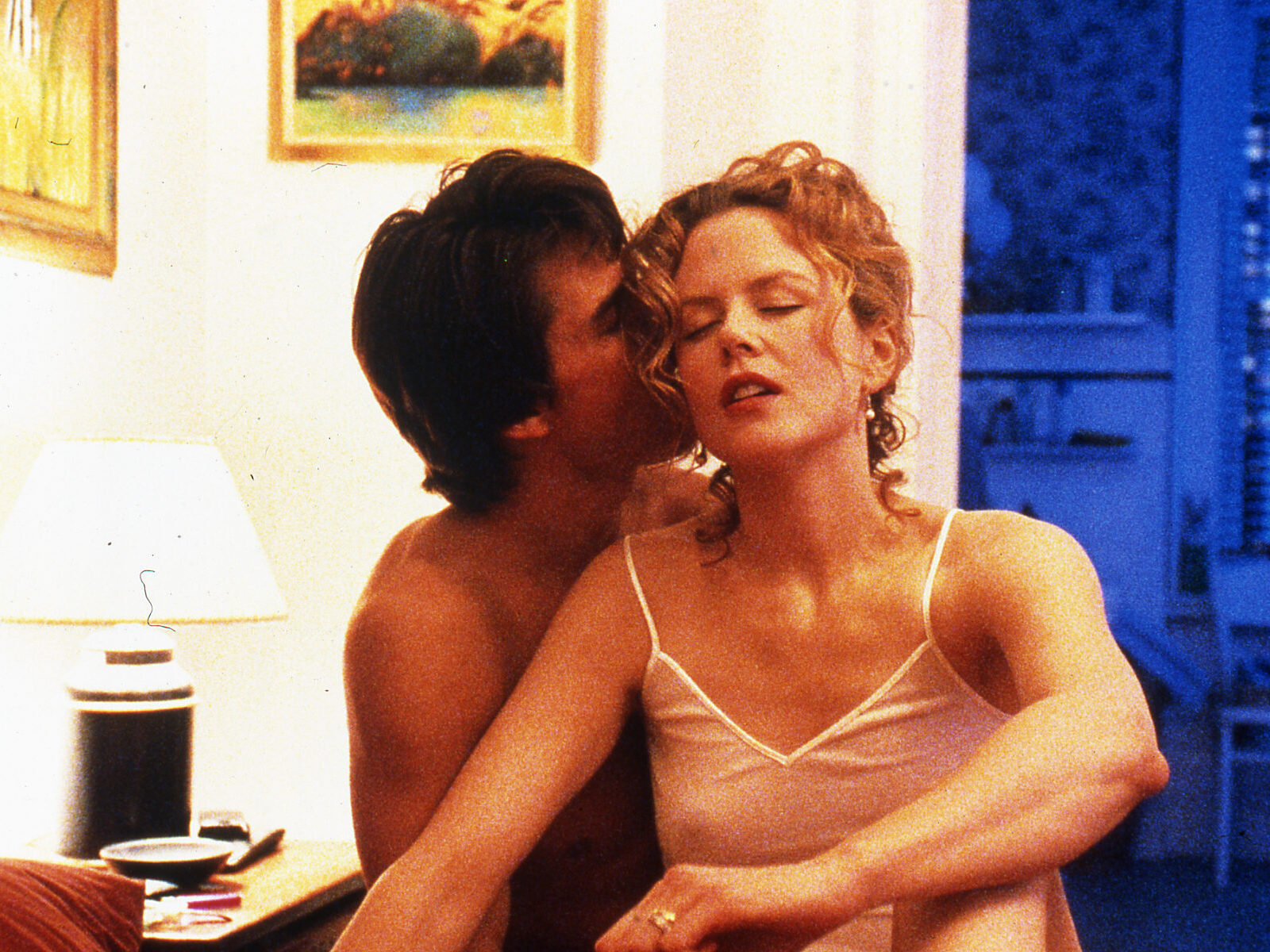
A Manhattan doctor embarks on a bizarre, night-long odyssey after his wife’s admission of unfulfilled longing.
EN
Nicole Kidman: There is something very important that we need to do as soon as possible...
Tom Cruise: What’s that?
Kidman: Fuck.
Last lines of the film
“There is also a novel by Arthur Schnitzler, Rhapsody: A Dream Novel, which I intend to do but on which I have not yet started to work. It's a difficult book to describe – what good book isn't? It explores the sexual ambivalence of a happy marriage and tries to equate the importance of sexual dreams and might-have-beens with reality. All of Schnitzler's work is psychologically brilliant, and he was greatly admired by Freud, who once wrote to him, apologizing for having always avoided a personal meeting. Making a joke (a joke?), Freud said this was because he was afraid of the popular superstition that if you meet your Doppelgänger (double) you would die.”
Stanley Kubrick1
“As an actor, you set up: there’s reality, and there’s pretend… And those lines get crossed, and it happens when you’re working with a director that allows that to happen. It’s a very exciting thing to happen; it’s a very dangerous thing to happen.”
Nicole Kidman, Tom Cruise’s wife at the time2
“In some of the scenes, the backgrounds were rear-projection plates. Generally, when Tom’s facing the camera, the backgrounds are rear-projected; anything that shows him from a side view was done on the streets of London. We had the plates shot in New York by a second unit. Once the plates were sent to us, we had them force-developed and balanced to the necessary levels. We’d then go onto our street sets and shoot Tom walking on a treadmill. After setting the treadmill to a certain speed, we’d put some lighting effects on him to simulate the glow from the various storefronts that were passing by in the plates. We spent a few weeks on those shots."
Cinematographer Larry Smith3
Chantal Akerman: I find that La captive (2000) is not far from Kubrick’s film. His last film…
Dominique Païni: Eyes Wide Shut
Akerman: Exactly. In the fact that when Richard Gere discovers...
Païni: No, it’s Tom Cruise.
Akerman: Yes, Tom Cruise discovers there’s something about his wife that he doesn’t know and that he’ll never know. And maybe it’s something that has to do with the early 20th century. I’d say Freud. Because those were things we didn’t ask before.
Païni: Really an early 20th century question.
Akerman: And also one which refers to women.
Païni: Discovering that the other has an unconscious. It’s not only his unconscious, but the fact that the other has one.
Akerman: And that the other is the other. And that we’ll never know everything about the other. And he [Tom Cruise’s character] is both obsessed and romantic. He has this idea that loving someone means becoming one with the other. She [Nicole Kidman’s character] tells him: “We’ll never be one. We’ll always be two.” I don’t know how old that idea is. I think all teenaged kids think about the love of their lives. That they’ll become one. But even if we dream about it, we find out that’s false.
Chantal Akerman in conversation with Dominique Païni4
- 1Stanley Kubrick, cited in Michel Ciment, “Interviews with Stanley Kubrick: A Clockwork Orange,” Kubrick (New York: Holt, Rinehart & Winston), 156.
- 2Nicole Kidman, cited in Robert Kolker & Nathan Abrams, Eyes Wide Shut: Stanley Kubrick and the making of his final film (New York: Oxford University Press, 2019), 90.
- 3Larry Smith, cited in Stephen Pizzello, “A Sword in the Bed: Eyes Wide Shut,” American Cinematographer 33 (1999).
- 4Chantal Akerman and Dominique Païni, "Conversation: Chantal Akerman and Dominique Païni." On La Captive. DVD. Directed by Chantal Akerman. Gemini Films, 2004.
NL
“Sociaal acceptabelere verlangens kunnen in talloze televisieprogramma’s worden ‘waargemaakt’. Er lijkt een maatschappij van de wensvervulling te zijn ontstaan, waarin niet zozeer Traumdeutung als wel de al dan niet virtuele vervulling van dromen is gevraagd. In de huidige cultuur is het Id door de ratio tot hoogste principe verheven, waarbij de waarheidsdrift van de markies de Sade echter is vervangen door het genot van het rollenspel. Ook het Wenen van Arthur Schnitzlers tekst is een grote maskerade, maar in de Traumnovelle bedekken de maskers een duistere, naakte waarheid, die zich in de orgie aan de mannelijke protagonist openbaart. Hier neemt Eyes Wide Shut een volkomen andere wending: de maskerade is de waarheid.
De camera, door Kubrick zelf bediend, lijkt door het trage tempo een haast paranoïde aandacht voor de zichtbare werkelijkheid te hebben. Alles wordt bedreigend. […] De tergende herhaling van de nachtelijke reis en de banale ontknoping zorgen voor een uiterst ongewone structuur. De tweede helft van de film demonteert het eerste deel: de anticlimax wordt door Kubrick tot kunst verheven. […] Met een flinterdun happy end achter een adembenemende anticlimax is Eyes Wide Shut een uitstekend laatste werk, juist omdat het niet afsluit, omdat het geen grafsteen op Kubricks oeuvre is. Het is een tartend non-einde dat ertoe uitnodigt alles nog een keer te gaan zien.”
Sven Lutticken1
“Liever ontleedt Kubrick het samenlevingscontract tussen de moderne man en dito vrouw tot op het bot in het zeldzaamste aller fenomenen: de heterofobe mainstream film, de enige beschuldiging die dit meesterwerk verdient en die zijn maker ongetwijfeld als eretitel had gedragen.”
Herman Asselberghs2
“Nu de meester dood is, kunnen de media ongegeneerd hun als cinefilie vermomde necrofilie botvieren op een oeuvre dat zo handig en overzichtelijk oogt.”
Edwin Carels3
- 1Sven Lutticken, “Een schitterende anticlimax. Stanley Kubricks Eyes Wide Shut,” De Witte Raaf, 83 (2000), 5-6.
- 2Herman Asselberghs, “Eyes Wide Shut. Een heterofobe mainstream film,” De Tijd Cultuur, 8 september 1999, 10-11.
- 3Edwin Carels, “Eyes Wide Shut. Van cinefilie tot necrofilie,” De Tijd Cultuur, 8 september 1999, 11.

